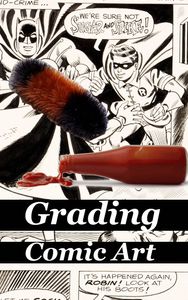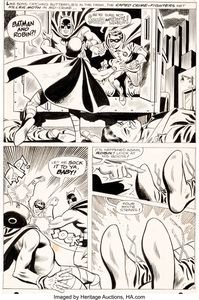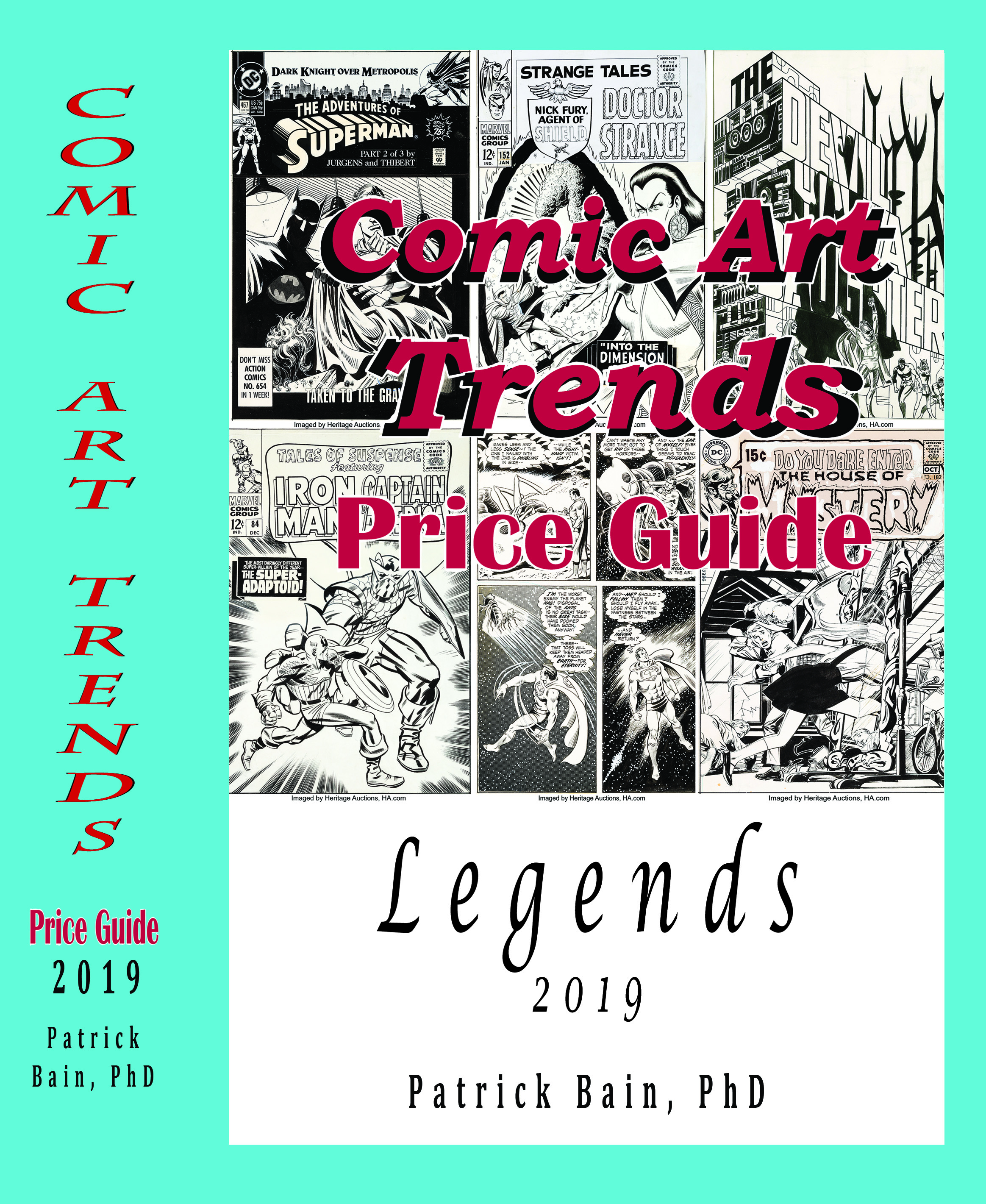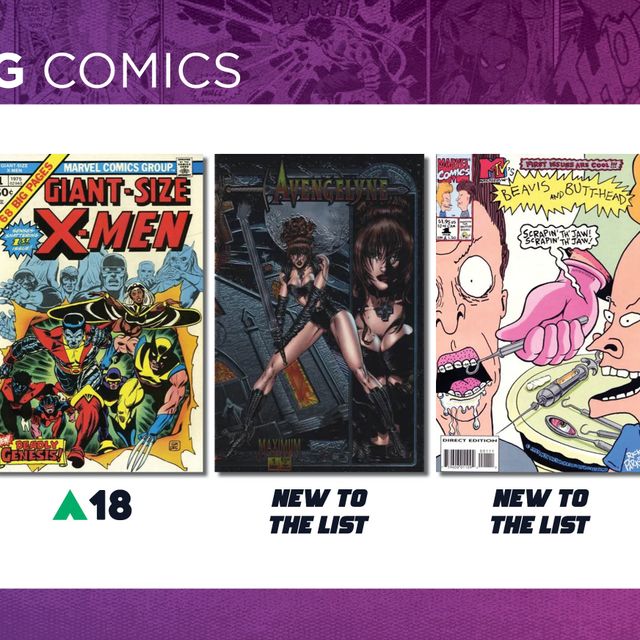
Grading Comic Books vs. Grading Comic Art
I hinted about the differences in grading philosophies for comics and art. Comic book grades start at Pristine Mint and decrease from 10 to 0.5 as defects accumulate. Creases, tears, signs of wear, food stains--all lower the grade. That is, when comparing thousands of copies of a single issue, condition differentiates one from another.
On the other hand, original art is one-of-a-kind. There are no copies available for comparison. Creases, tears, signs of wear, even food stains... too bad. There's still only one! Thus, even if that iconic page of art is sporting a fuzzy caterpillar, I grade it the same way. Note, one exception to the rule is MISSING ART--chunks of lost art result in downgrading a page.
So, grading comic art is NOTHING like grading mass-produced comic books!
Note - Batman #200, pictured to the right here, shows stains, some creases along the spine, and general wear. Compare to the crisp and clean 9.6 copy pictured in GoCollect.
What factors do matter?
Pay attention. Here is the money statement. Comic books are graded based on CONDITION. Savvy art collectors grade original comic book art based on CONTENT!
Like I stated, original art investors overlook yellow pages, pencil or ink smudges, creases, and even small tears. What do they care about?
 Batman 200 Page 13 - Art by Chic Stone and Joe Giella
Batman 200 Page 13 - Art by Chic Stone and Joe GiellaA great page of art features well known and significant characters. Characters should be prominently featured, not just a small cameo. Art depicting a famous first appearance or other major event stands out. Special firsts are just as important to original art as they are to comic books! A 'number 1' almost always sells for multiples of a second or third issue. In the same way, art collectors enjoy the pride of owning a 'number 1'. Thus, the major factors that matter when grading original comic book art are CONTENT based!
Do you have a grading taxonomy (LOL)?
I call my art scoring system the CAT scale. You can think of that as the Comic Art Trends scale, or even better, the Comic Art Taxonomy. Taxonomy is a scientific word for classification (not a similar word for stuffed animals).
The first part of the scheme or taxonomy divides art into the categories of cover, splash, or panel page. Then, based on characters, I score the art with a high grade if the major character is throughout the page in dynamic action. Otherwise, the page is score lowered as the character diminishes in prominence. Characters like Spider-Man and Batman score higher than less recognizable characters such as Beast Boy or Wonder Man. Special events or special artists add a "Plus One" in my scoring system because those specials drive collector demand.
Without going breakdown, breakdown, breakdown on my scoring system here, the summary is that the CAT scale basically follows a collector's intuition as to what factors create art appreciation. Get a free pdf of the CAT scale here.
Anyone willing to pay outrageous prices for an art grading service?
There is no CGC or CBCS for grading original comic art. Wait a second... gears in brains whirring... no, I don't think anyone is going to ship their art to me and pay a flat fee plus percentage of value to grade their art. Oh well, if you're thinking about it, send away. Most kidding aside, grading art is a subjective activity that can be managed by an objective scale. The key is relative classifications with an understanding that one-of-a-kind items sometimes don't follow rules when bought and sold. And importantly, similar to points made by fellow GoCollect blogger John Casper in "How to Spot a Quality Graded Comic", two pages of art with the same grade are not always similar. For another time, I will talk about the name on the page, years of publication, and other factors impacting price.
By the way, I stand by my statement about ketchup stains. Do you think people wouldn't pay an enormous sum for the cover of X-Men #1--even if Jack Kirby dripped ketchup from his burger on it?





